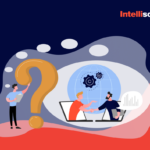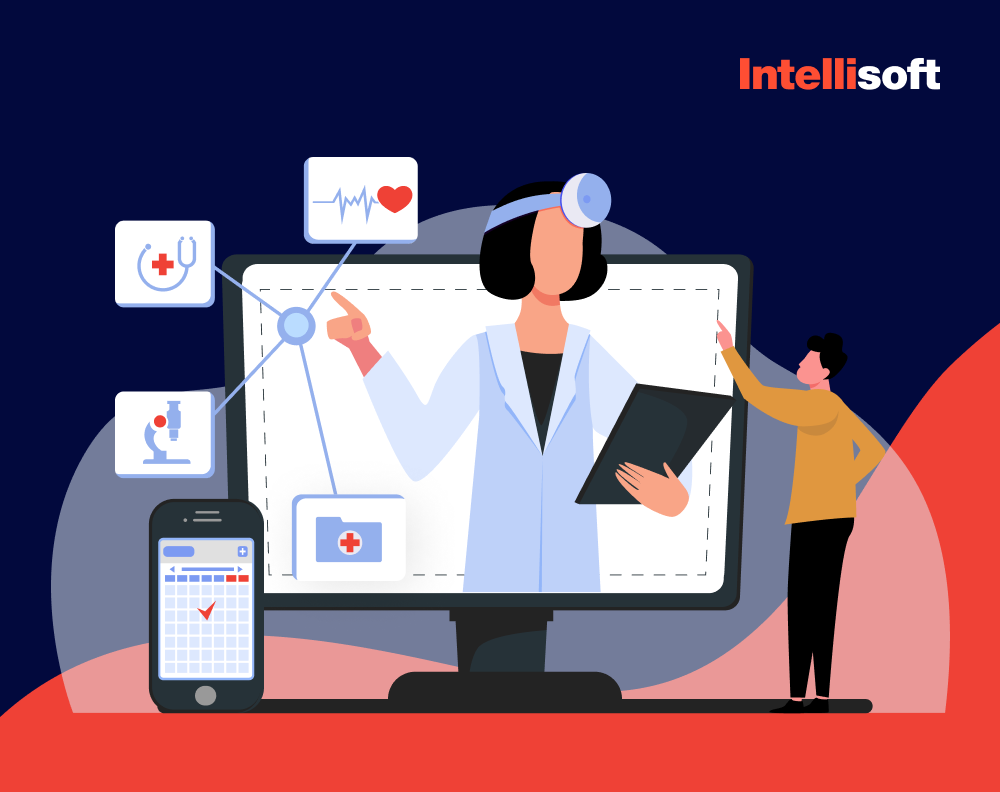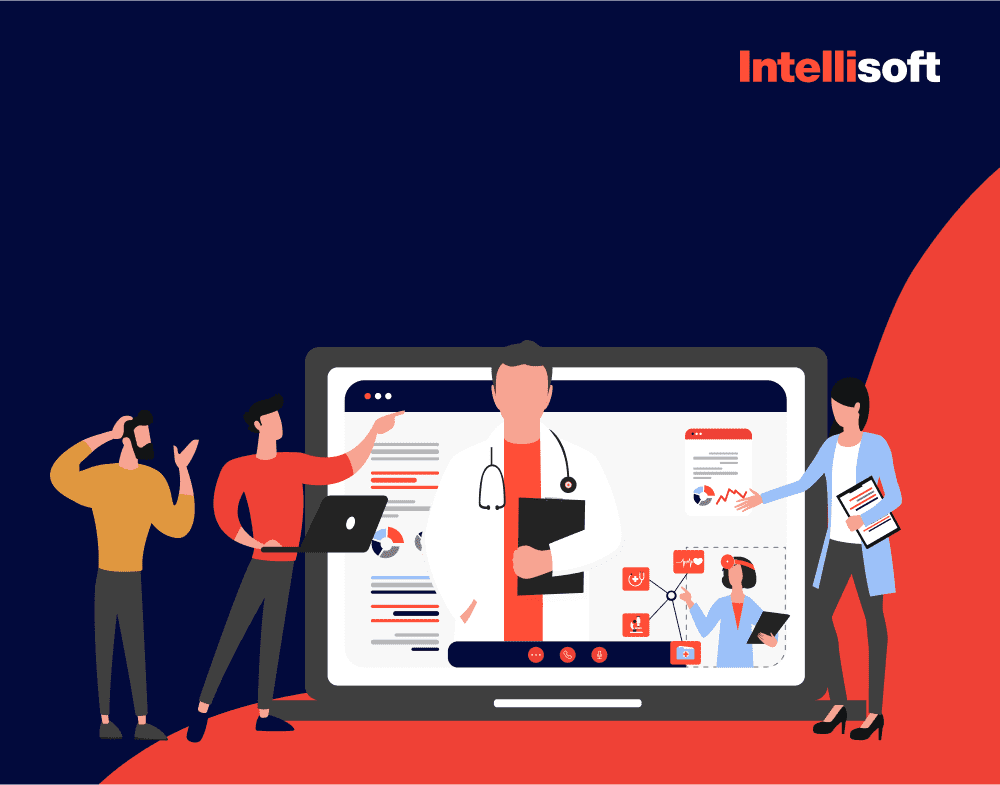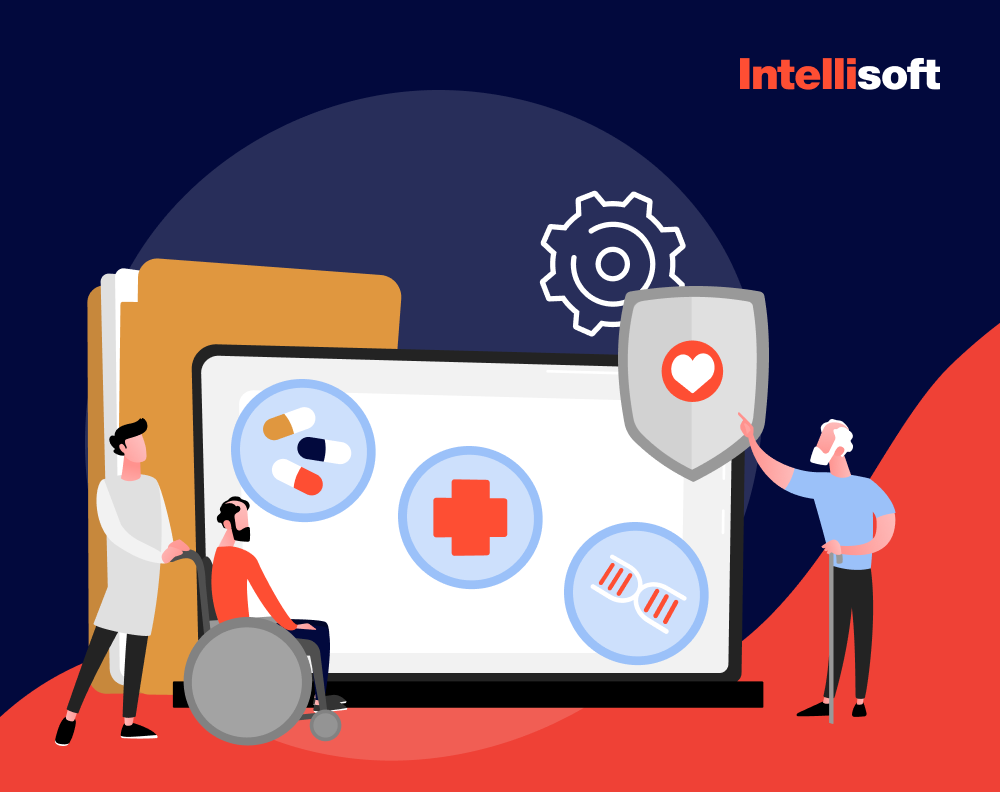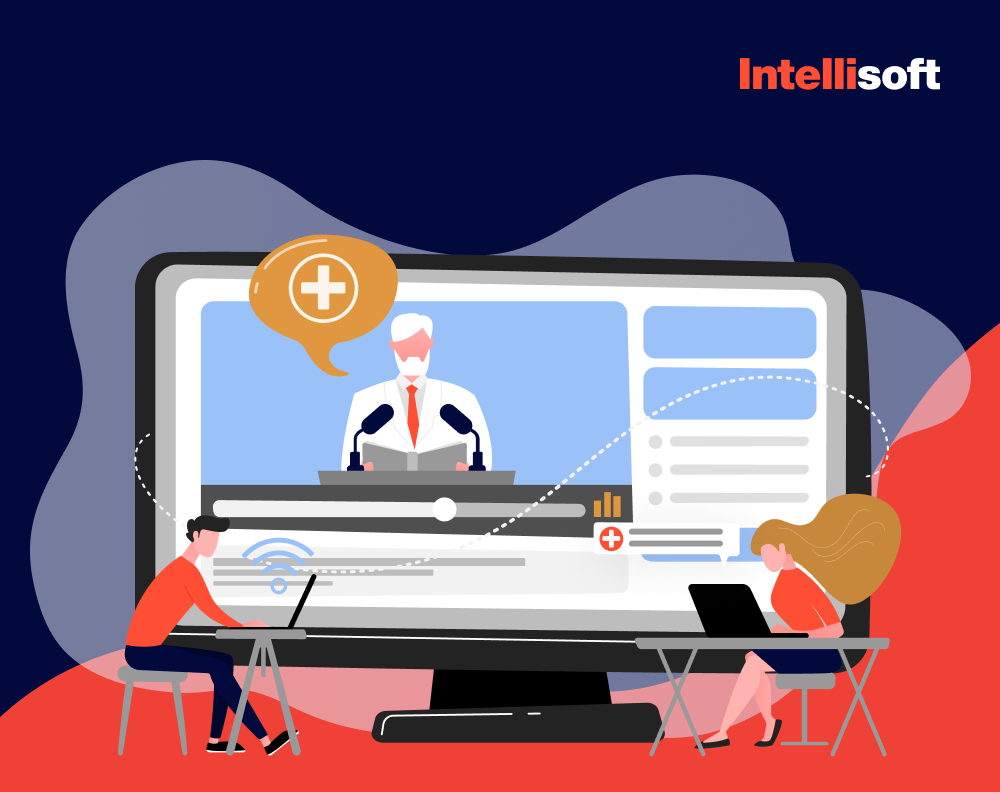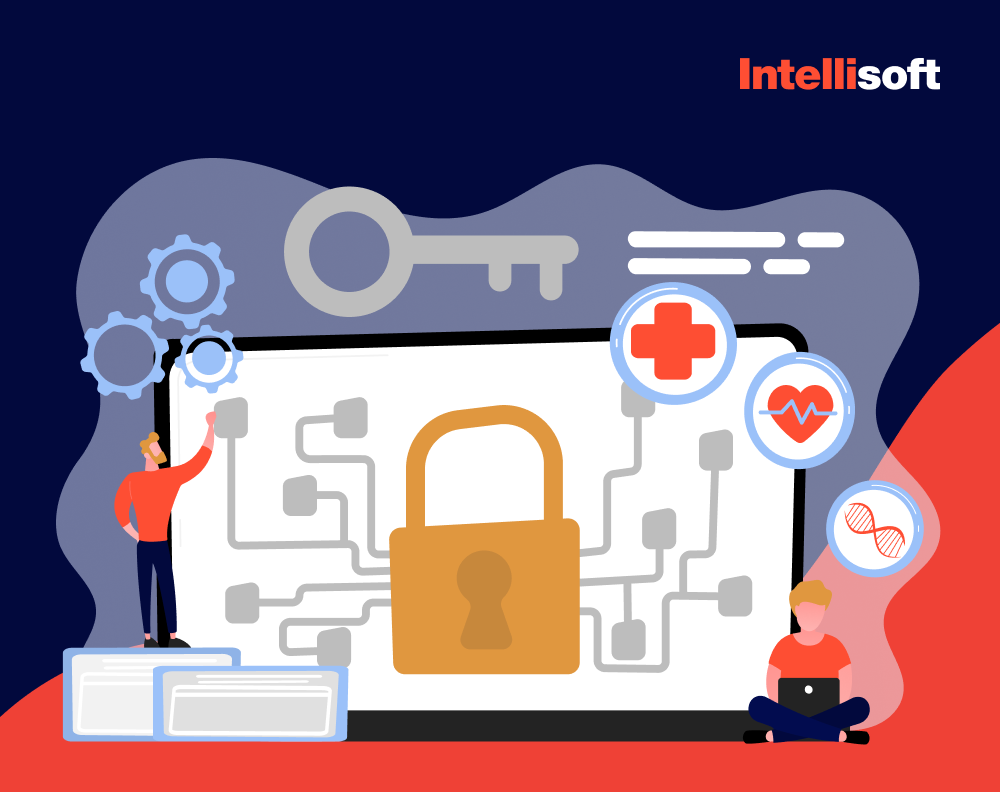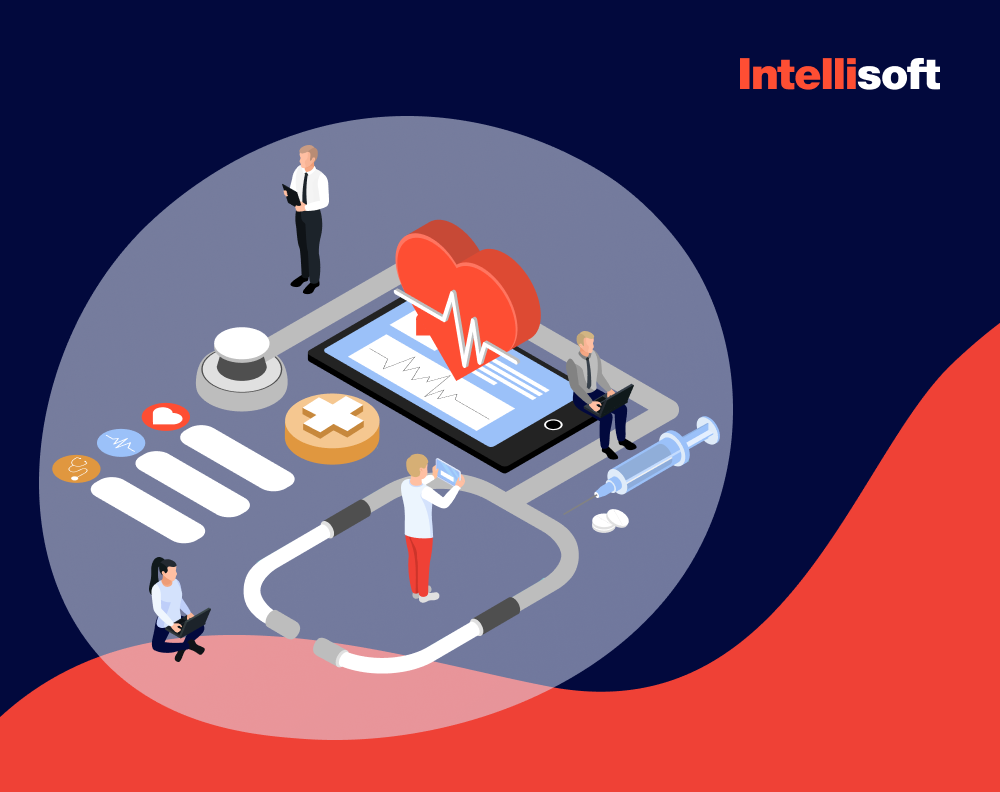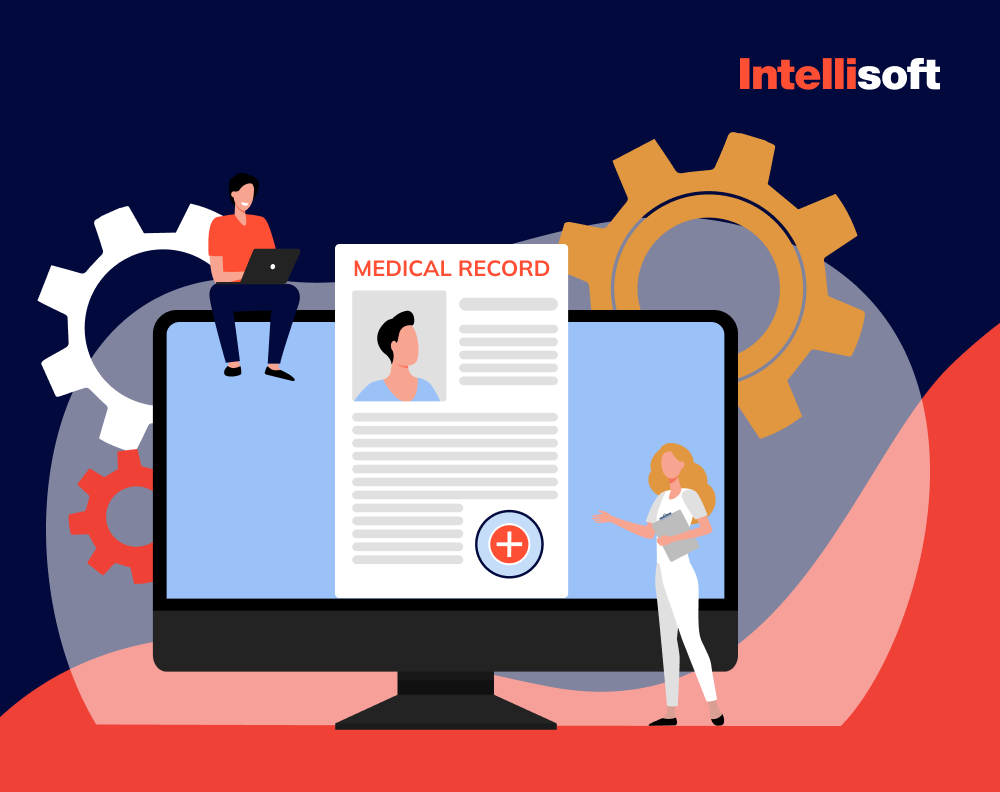Technology is revolutionizing every aspect of our lives, from banking and shopping to how we travel. However, the impact of digital transformation in healthcare is only beginning to emerge.
Did you know that a staggering 92% of medical professionals and institutions have reported improved performance due to digital transformation in healthcare industry, according to Deloitte? This statistic highlights digital services’ significant impact on healthcare, providing providers with innovative ways to use technology effectively.
Furthermore, the global digital healthcare market is projected to reach an astonishing $657 billion by 2025. This rapid growth indicates a quickly evolving landscape where understanding digital health platforms is essential for transforming healthcare practices.
In this blog, we’ll explore the digital transformation in healthcare, breaking down the elements reshaping the industry. Let’s get started!
Table of Contents
What is Digital Transformation in the Healthcare Industry?
Let’s explore the definition of digital transformation in healthcare! This sector’s digital transformation is all about using technology to enhance patient and healthcare providers’ experience, ensuring mutual benefits.
Digital healthcare goes beyond merely using technology—it’s about employing it wisely and effectively. It’s not just about Googling symptoms and jumping to conclusions before seeing a doctor—that’s not what we aim for! Instead, it’s about thoughtful and structured applications of tech solutions that genuinely address healthcare challenges.
Take the misuse of platforms like WebMD, for instance. People often play doctor themselves, complicating the diagnostic process rather than simplifying it. This misuse highlights how technology can sometimes misalign with the goals of digital healthcare. On the other hand, true digital transformation is exemplified by tools such as health wearables and patient portals, which improve the flow of vital information between doctors and patients.
The COVID-19 pandemic underscored the importance of digital transformation in healthcare, accelerating the adoption of robust telehealth services and other virtual care solutions. As the internet and technology become more integral to our daily lives, the reach of digital healthcare solutions grows, bringing sophisticated care to a broader population.
Patient portals, health wearables, and telehealth services are just the beginning. The future holds even more exciting possibilities, with automation, on-demand medical services, and advanced analytics in disease history becoming standard, all driven by continuous digital transformation in the healthcare industry.
Digital Healthcare Solutions Use Cases
Digital transformation is shaking up the healthcare industry, providing a fresh perspective on how medical teams monitor and care for patients. This move towards cutting-edge healthcare IT solutions stems from a genuine need to enhance patient care, simplify core operations, and cut down on expenses. Here are some practical digital transformation examples in healthcare that are valuable to review.
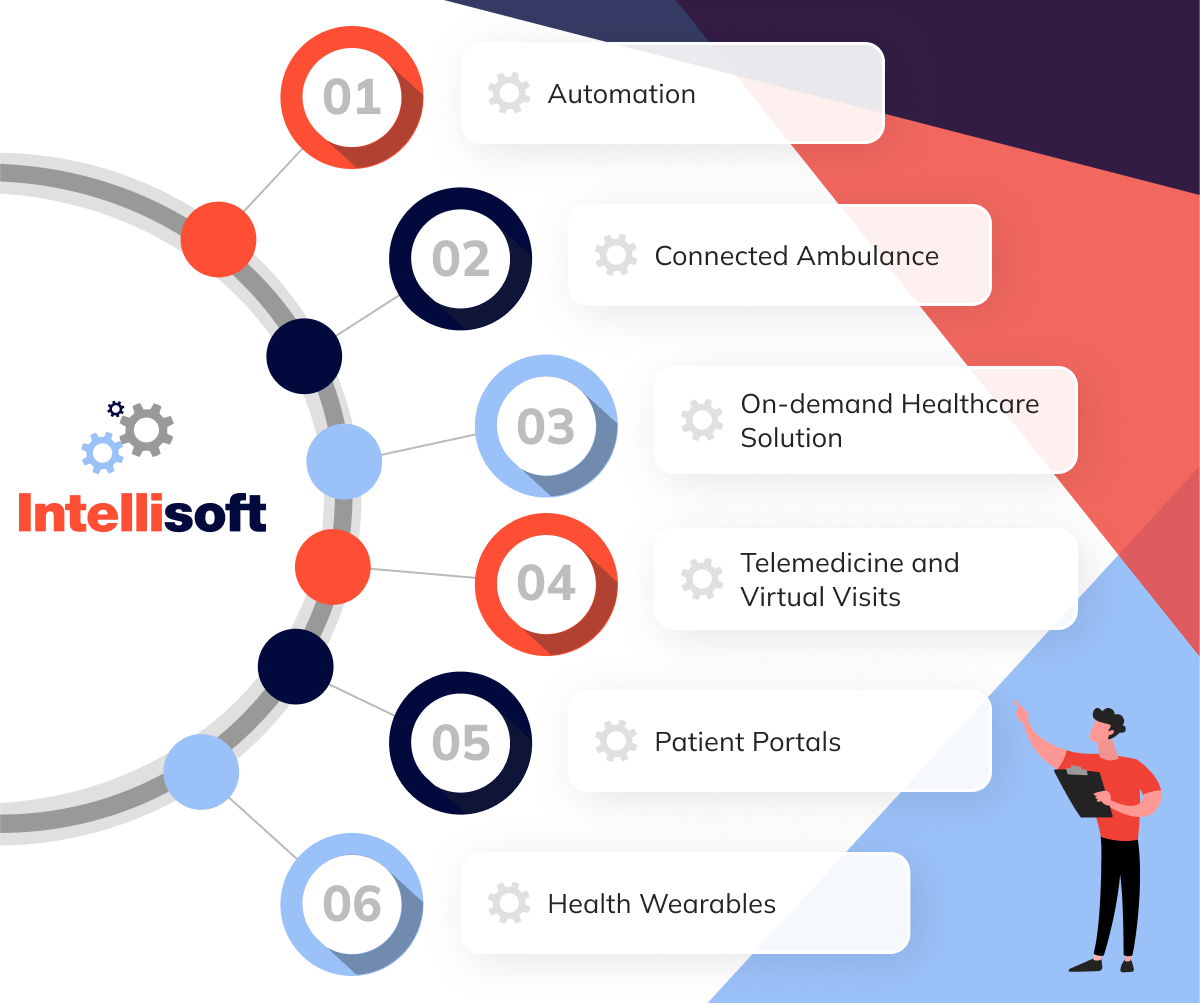
Automation
Automation is revolutionizing the healthcare industry, transforming it into a model of efficiency and enhanced patient care. By 2022, the global AI market had reached an impressive value of $119.78 billion, with expectations of explosive growth at a projected annual rate of 38% through 2030. This trend suggests a future where artificial intelligence becomes integral across various sectors, especially in healthcare, simplifying operations and streamlining complex workflows.
In practical terms, automation allows hospitals to accomplish more with fewer resources and less workforce. This approach not only saves time and cuts costs, but also significantly boosts the overall efficiency of healthcare services. Most importantly, patients greatly benefit from these advancements. Automation enhances the quality of care, shortens hospital stays, and makes the entire experience safer and more pleasant. Specifically, automation in healthcare leads to:
- Improved patient safety
- Increased operational efficiency
- Enhanced access to healthcare services
- Greater patient engagement
Connected Ambulance
The work of a connected ambulance is to assist healthcare providers. It shall pick up, through a variety of wearable devices, sensors, and HD cameras, the vital information of the patient on one end and forward it to the hospital on the other end. At the same time, the patient is being taken to the required hospital or department.
Probably the most important advantage of a connected ambulance is that even before the patient’s admission to the hospital, doctors would have all the necessary information to perform all the required medical procedures without wasting one second.
Connected ambulances achieve the following for health providers:
- It helps in real-time care
- It provides transformative technology and is always connected to the hospital
- It virtually transports doctors to the ambulance
On-demand Healthcare Solution
On-demand services manage the technological zone of influence encircling the modern world. This way, the whole healthcare field is changing very fast, and there is a rise in the need to improve the available services quickly.
The times when not much was talked about or mentioned in the health field have changed quite a bit now. On the contrary, patients always need instant solutions to their problems; that is exactly where these on-demand healthcare solutions come into place.
Imagine this situation; you’re running a high fever, and instead of waiting for a doctor to see you, you can easily schedule an appointment at the clinic by tapping a few buttons. Amazing, isn’t it? The on-demand solution helps you in the following ways:
- It reduces paperwork, increasing efficiency
- It gives people easy access to medical care
- It eliminates a host of hassles
- It yields effective patient interactions
Telemedicine and Virtual Visits
Probably the greatest trend in health care is virtual medical visits. Telehealth enables phone or video appointments between a patient and a health professional, which has several benefits for the patient’s health and convenience. Telehealth is a must for Health IT.
The telehealth and telemedicine market is likely to reach $912 billion by 2033, growing at a compound annual growth rate of 24% from 2023 to 2033 based on the estimate by Future Market Insights. Telemedicine and virtual visits can do the following for you:
- It provides comfort and convenience
- It can control infectious diseases
- It provides a better evaluation
- It promotes the management of chronic diseases and primary health care
Patient Portals
Provide the patient with easy access to health records along with benefits like electronic prescriptions and online appointments to doctors. It assists in effective communication between patients and medical professionals.
You can use a patient portal to get test results, ask questions, or update patient profiles and insurance companies from one location. Some patient websites also allow patients to schedule appointments and pay bills online. You can access a patient portal by following these steps:
- It offers quick growth
- It enhances the efficiency of the office
- It helps make the workflow smoother
- It facilitates telemedicine that allows patients to consult you via messages or video calls
- It improves patient engagement
Health Wearables
Another superb use case for healthcare IT services is wearables. They are developed to track and gather information on their users’ health and exercise, and can transmit patient data to a doctor or another treating medical professional in real time so that they can assess it. The nature of patients today is to take more care of their health than they did before. Instead of visiting the doctor when ill, they look for efficient ways to monitor their health indicators.
This factor is one of the keys behind the manifold increase in the sales of wearable medical gadgets. Due to the digital transformation in healthcare industry, several health parameters can now be monitored, and reliable health data in real-time is made possible. Health wearables can aid you in the following ways:
- It reduces healthcare costs with digital health transformation
- It helps enhance patient engagement
- It motivates people toward proactive healthcare
- It reduces the workload of the workforce
Benefits of Digital Transformation in Healthcare
Apart from the grants and other incentives from the government to embrace digital healthcare transformation, it is good for many reasons. There are a number of reasons why using digital healthcare services is suitable for both patients and providers.
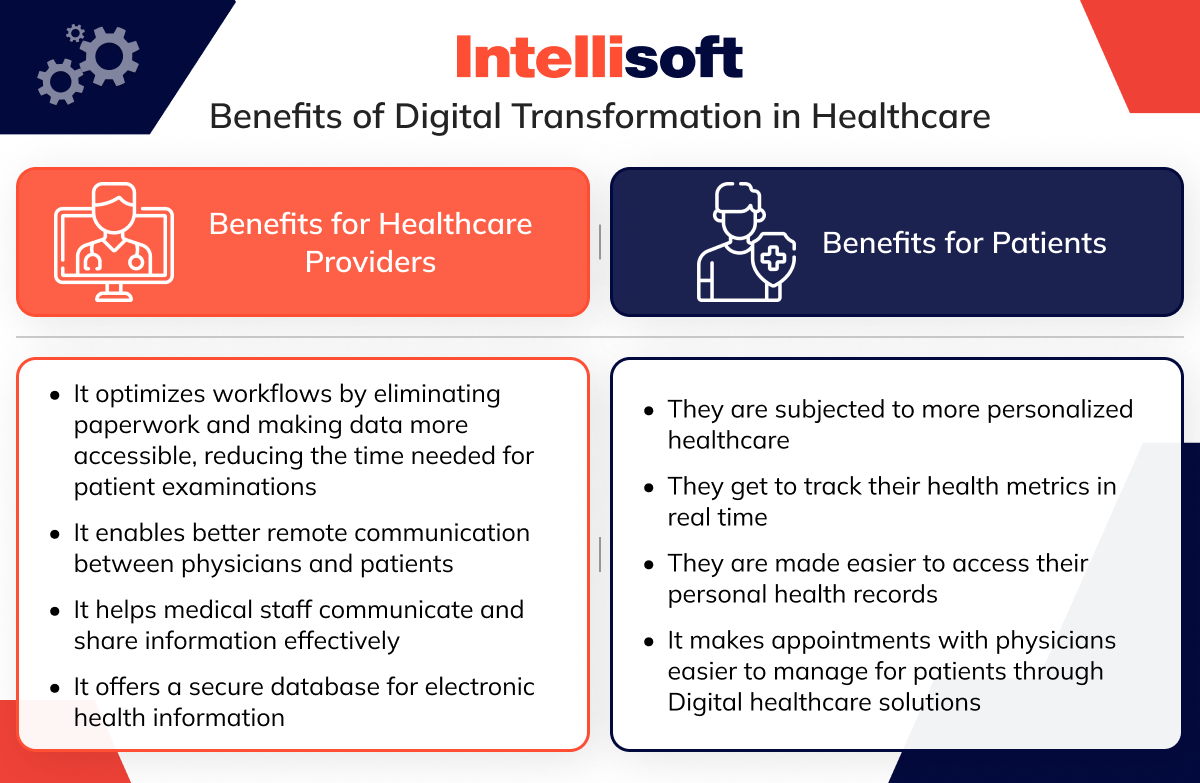
The following are how digital healthcare solutions benefit doctors, hospitals, medical institutions, and every other type of healthcare provider:
- It optimizes workflows by eliminating paperwork and making data more accessible, reducing the time needed for patient examinations
- It enables better remote communication between physicians and patients
- It helps medical staff communicate and share information effectively
- It offers a secure database for electronic health information
Following are the benefits that the patients receive through the channel of digital healthcare:
- They are subjected to more personalized healthcare
- They get to track their health metrics in real time
- They are made easier to access their personal health records
- It makes appointments with physicians easier to manage for patients through Digital healthcare solutions
Related articles:
- Big Data Analytics in Healthcare: Role and Benefits
- Data Warehousing in Healthcare: Transformative Strategies
- Hospital Management Software: Drive Superior Patient Outcomes
- What is EHR Software? Build Your Custom System and Digitize Doctor’s Scribbles with IntelliSoft
- Best Examples Of Successful Healthcare IT Start-Ups From Denmark
Healthcare Digital Transformation: Challenges and Barriers
Though the benefits of digital transformation are undeniable, the healthcare industry remains behind many other sectors in embracing digital technologies and services.
Let’s look into the most outstanding barriers to digital transformation in healthcare.
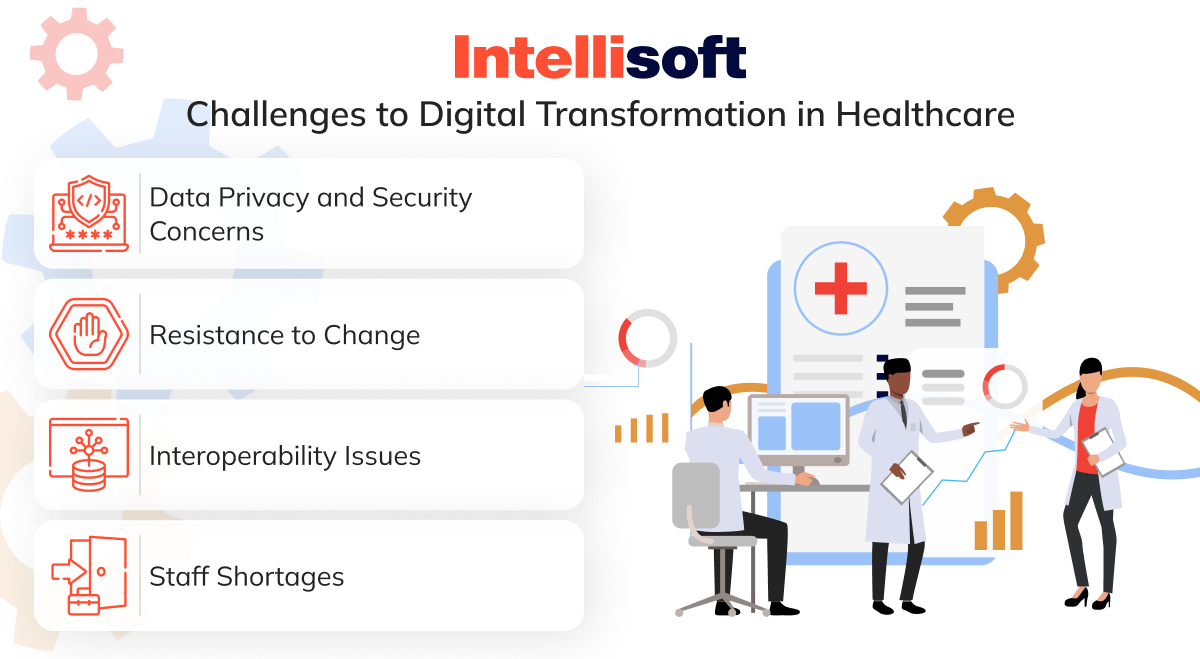
Data Privacy and Security Concerns
Patient healthcare data could be the most sensitive form of data. In this regard, worries about data privacy and cybersecurity shifting with digital health are quite justified.
Although most administrative ERP solutions available today can be deployed into healthcare settings, they still lack strict security requirements. This issue raises the question of choosing the right option for digital healthcare solutions that regulate and protect patient data.
Resistance to Change
The doctor’s profession is essentially one of the oldest professions known in human history, and most healthcare organizations have a legacy that runs into decades, if not more. Institutes like these are resistant to change, especially the kind that is transformational and organizational, which digital transformation in healthcare promises to be.
Interoperability Issues
It’s almost as if digital healthcare solutions have another barrier to overcome, which seems to be a byproduct of healthcare organizations’ resistance to change: interoperability issues. Legacy systems and newer digital applications simply will not work together.
Many platforms comprise the digital healthcare landscape, and information exchange is not always facilitated.
Staff Shortages
IT and healthcare once operated in separate realms, seldom overlapping. Today, however, the digital revolution in healthcare has fused these domains, creating a dynamic new environment. Healthcare practitioners, including doctors, are now striving to master digital tools to transform their profession. Nevertheless, the transition to technological proficiency is gradual, with only a select few early adopters at the forefront.
“As of now, technological advancements occur so swiftly that innovations can become obsolete even before they gain widespread adoption. The healthcare sector is particularly unique in this regard. While launching a new product in most industries is a relatively quick process, it demands significantly more time and effort in healthcare.” – John Nosta
How to Overcome Challenges to Digital Healthcare Transformation?
Those will by no means be the only challenges of digital transformation in healthcare. Other challenges include data trapped in silos within the platforms, antiquated models of the payers, and coordination difficulties with a distributed workforce. Tackling such challenges involves commitment and effort.
One of the best ways to ensure that digital transformation has a strong foothold within a healthcare organization is through a chief technology officer. This person would be better positioned to advocate for new technologies while seeking digital healthcare solutions aligned with the organization’s vision and mission.
Staff should get the necessary training; patients should access the infrastructure to start using these digital healthcare solutions must be created, and new advancements in health tech need to be tracked.
Real-World Examples and Use Cases of Digital Healthcare Solutions
The digital transformation in healthcare is set to revolutionize the industry by integrating cutting-edge solutions that enhance operational efficiency, ensure regulatory compliance, improve patient outcomes, and reduce costs. Let’s explore some compelling use cases and real-world examples of digital transformation in healthcare, demonstrating how these advancements boost efficiency and reshape this industry.
Telemedicine and Virtual Visits
One of the most influential effects of digital transformation in healthcare industry is easily recognizable through increasing virtual doctor visits. When the COVID19 pandemic brutally disrupted in-person care in 2020, everyone’s attention turned toward telemedicine. As a result, the number of teleconsultations soared, enabling patients to book medical appointments and consult with doctors from the comfort of their homes through video, audio, and messaging.
For instance, Zocdoc and Patient Access are leading healthcare apps through which patients can find a doctor urgently for an appointment and schedule online video visits at their convenience. They can also track annual checkups.
Considering the ever-growing scope of telemedicine, patients residing in suburbs or far-flung areas could access care in time without visiting a hospital. This approach is more time and cost-efficient than in-person hospital visits.
Patient Portals
Another major use case for digital healthcare solutions is patient portals, through which patients can view their health records, check prescriptions, and make appointments with doctors, among other things. According to one survey, 82% of healthcare providers consider patient portals among the primary technologies used to engage their patients.
This trend increases the speed and convenience of access to electronic health records and substantially lightens the workload on the medical staff. It is also very easy to share data among multiple digital transformation in healthcare providers; calling and transferring records manually is no longer necessary.
A prime example of effective patient portal technology is the FollowMyHealth system. It enables patients to schedule appointments with specialists, access their prescriptions and health records, and effortlessly share health data.
Health Wearables
In this case, people have become more aware of their health after the world suffered from COVID19. They always strive for effective yet easy ways to monitor health metrics. That is why there has been a tremendous surge in sales of wearable medical devices. Their integration with innovative tech solutions helps users get accurate health data and metrics in real-time. Some standard health wearables include heart rate trackers, oximeters, and fitness trackers.
For instance, one of the trendiest wearables introduced to the digital transformation in healthcare market is the Apple Watch. This gadget allows users to monitor their heart rate, receive reminders to drink water or wash their hands, and record body temperature, weight, and menstrual cycles. Healthcare professionals can utilize this data for diagnosis, prescriptions, and other purposes. In summary, wearables are revolutionizing healthcare by enhancing efficiency and improving patient care.
Data Aggregation
While patient portals pull patient data, most hospitals also focus on back-end data aggregation. Clinics and hospitals now gather data from multiple sources, including electronic health records, laboratory results, insurance claims, medical devices, and imaging. Because of the plethora of these sources, vital patient medical history information may be missed.
Data aggregation allows medical professionals to make faster, more knowledgeable decisions about patient care without the fear of missing important information. Thus, this digital healthcare innovation improves patient care while reducing costs.
For instance, Mayo Clinic uses the data aggregation method collaboratively with Google through cloud solutions. They manage data storage and analytics in the cloud all in one place.
Disease History Analysis
Nowadays, many tools can analyze a patient’s case history to provide recommendations about treatment outcomes. BostonGene operates one solution that deeply analyzes a patient’s previous conditions and proposes a personalized treatment that could yield the best results.
Steps to Implement Digital Transformation
Any health organization aiming for a digital transformation should always have a well-defined strategy. Digital healthcare solutions can lead to significant changes, but these benefits are realized only when integrated into an effective plan.
If you’re considering digital healthcare transformation, adopt a step-by-step approach as outlined below.
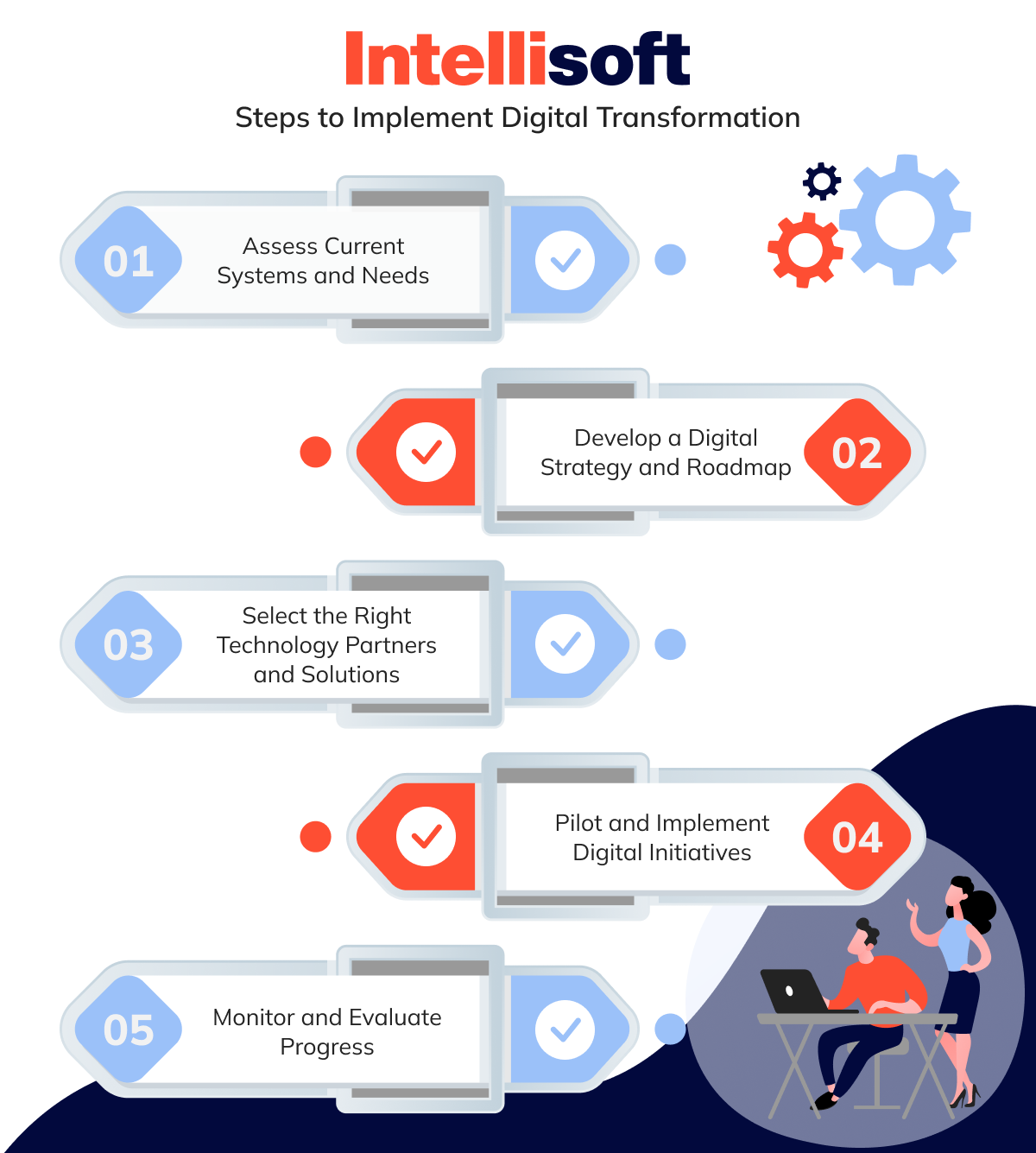
Step 1. Assess Current Systems and Needs
Preparing for new technology in healthcare requires a thorough review of your tech stack, at minimum. This involves asking yourself and other stakeholders how the current solutions and applications are being used, why they are being used today, and where they may be falling short.
Step 2. Develop a Digital Strategy and Roadmap
With a clear understanding of your current position, it’s time to outline your next steps. Your digital strategy and roadmap should encompass an overarching vision and include key performance indicators that can be measured with readily available metrics. Break down your healthcare digital transformation into stages to facilitate large-scale organizational change.
Step 3. Select the Right Technology Partners and Solutions
Many healthcare organizations may lack an IT officer with the expertise to develop a digital transformation strategy. Therefore, you should find a reliable transformational partner who can help curate a selection of digital healthcare solutions to maximize benefits for your organization and patients.
Step 4. Pilot and Implement Digital Initiatives
Pilot any digital solutions before widespread implementation. Identify the appropriate use cases and experiment with various solutions and platforms.
Step 5. Monitor and Evaluate Progress
Digital healthcare transformation is an ongoing process. The best way to achieve results is to track the performance of new digital applications and regularly review their effectiveness in meeting desired outcomes.
Every transformation strategy should be agile and be able to pivot to new solutions if earlier ones fail.
Top Digital Transformation Trends in the Healthcare Sector
Technological advancements and innovations are driving digital transformation in healthcare. Digital technologies are shaping the future of healthcare, revolutionizing medical practice and significantly enhancing operational efficiency. This shift has profoundly improved the experiences of both healthcare providers and patients. Below are some popular digital transformation trends in healthcare that are progressively revolutionizing digital health startups and institutions:
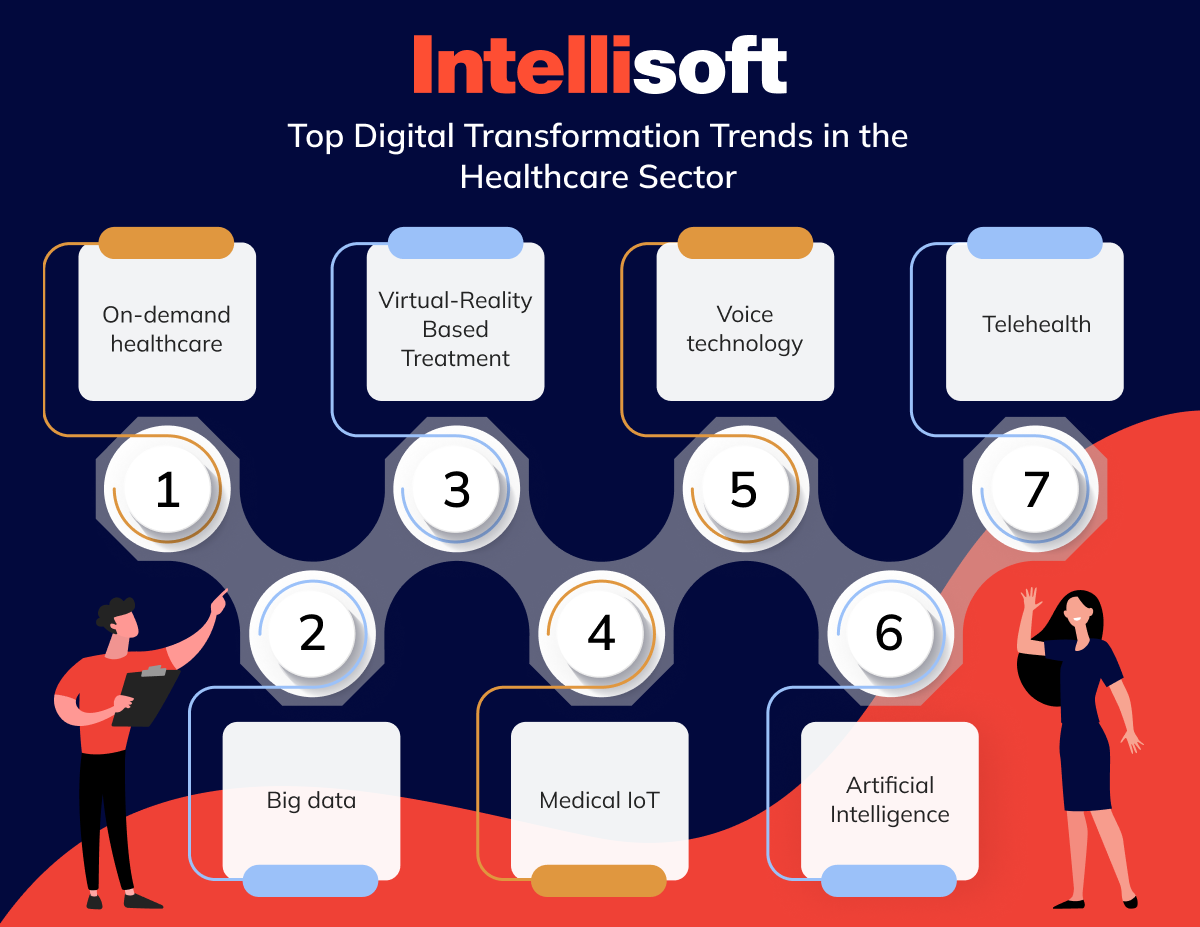
On-demand healthcare
The healthcare mobile application development field is entering a new era of digital innovation, with patients increasingly relying on their smartphones for on-demand healthcare. Brands such as Nomad Health are focusing on user-centric activities and empowering their physicians to offer on-demand services based on their expertise and availability.
Big data
Big data will grow exponentially in the digital transformation healthcare in market as it works around millions of data every hour on a global scale in the healthcare industry. According to Globe News Wire, the global big data market was valued at $220.02 billion in 2023 and is likely to grow up to $401.2 billion by 2028 during the forecast period of 2023-2028 at a CAGR of 12.7%.
With the capacity to convert unstructured and structured data into meaningful insights, big data may come along with several benefits associated with it, such as:
- Lower medication error rate. One significant advantage of big data-powered software is reducing medication error rates. This technology can identify inconsistencies between a patient’s health status and prescribed medications, promptly alerting health professionals and patients to potential errors.
- Accurate staffing. It is another benefit facilitated by big data. Through predictive analysis, hospitals can forecast admission rates, enabling them to allocate the necessary staff effectively to manage patient inflows.
- Informed strategic planning. It allows healthcare professionals to analyze checkup results across various demographic groups, gaining insights into factors that may discourage individuals from seeking treatment. These comprehensive data points can then inform the development of well-planned healthcare strategies.
Virtual-Reality Based Treatment
Virtual reality has seamlessly integrated into the digital healthcare ecosystem, proving particularly effective in treating chronic pain in regions severely affected by the drug crisis. Moreover, this technology has shown promise in alleviating PTSD and stress. Medical residents and doctors routinely employ VR simulations to enhance their skills and plan for complex surgeries. The entire medical community, from physicians to pharmaceutical companies, is leveraging virtual reality to improve patient care and treatment outcomes. This widespread adoption is a key factor driving the global AR/VR market, which is projected to reach $9.7 billion by 2028.
Medical IoT
While the digital transformation in healthcare sector has generally been slow in implementing the IoT, the medical IoT is developing fast. Though the medical IoT itself might appear complicated and consist of many solutions, its use cases consist of several core functions. Smart hospitals rely on various functionalities, from basic tracking solutions to sophisticated automation systems. These capabilities underpin the primary pillars of a smart hospital: clinical excellence, patient-centered care, and operational efficiency.
Voice technology
Now, voice technology is in the buzz. Voice technology is expected to gain significant traction in the coming years, focusing on reducing physicians’ workload by streamlining administrative tasks. Notably, Microsoft and Amazon are making substantial strides in this area. Microsoft has teamed up with Nuance Communications to create voice-enabled EHR platforms to enhance clinical intelligence and ease administrative burdens. Meanwhile, Amazon has developed various healthcare “skills” for Alexa, further integrating voice technology into the healthcare sector. These competencies can save lots of time and hassle if they can recommend when to visit a doctor at each clinic or hospital.
Artificial Intelligence
AI is one of the most significant trends propelling the digital transformation of the healthcare industry. According to Statista, the global AI market in healthcare was valued at approximately $15 billion in 2022 and is projected to soar to $188 billion by 2030, growing at a compound annual growth rate (CAGR) of 37% from 2022 to 2030.
AI’s application in healthcare spans various fields, including drug discovery, medical imaging, and precision medicine. For instance, in oncology, AI can analyze thousands of pathology images from different cancer types to recommend the most effective anti-cancer drug combinations. AI holds immense potential to revolutionize medicine by enhancing diagnosis, improving patient outcomes, and optimizing treatment strategies. Moreover, AI-powered virtual assistants and chatbots can elevate patient experiences and increase the efficiency of healthcare centers. An example is Moxi, a robot that assists nurses with routine tasks, streamlining their workload.
Telehealth
This aspect reforms patients’ interactions with healthcare providers. Telemedicine, mHealth apps, video conferencing, and remote patient monitoring are impacting technologies under telehealth. Its usage increased manifolds during the pandemic since technology helped eliminate unwanted contacts while letting patients manage their conditions. Telehealth can also be integrated with IoT devices and wearables to manage high-risk patients more effectively by tracking their activity data. This combination allows for continuous monitoring and timely interventions, enhancing patient care and outcomes.
Conclusion
Digital transformation in healthcare is a thing that enhances patient care, simplifies operations, and opens doors to new medical breakthroughs. Picture a world where AI-driven diagnostics and telemedicine are just the start. These technologies are making healthcare not only more efficient but also more accessible and centered on patient needs.
At the heart of this shift is IntelliSoft. As a seasoned software outsourcing company, we craft bespoke digital solutions for healthcare providers. Our expertise in custom software development empowers healthcare organizations to embrace cutting-edge technologies, leading to better patient outcomes and improved operational efficiency.
But we do more than just create software; we excel in offering top-notch digital transformation consulting services. Our experts work closely with clients, examining their unique challenges and opportunities. Through strategic advice and practical insights, IntelliSoft helps healthcare organizations navigate their digital journey—whether it’s implementing new technology, refining existing systems, or navigating healthcare regulations. Contact us today, and we will pave the way to better care and greater efficiency for your project.
